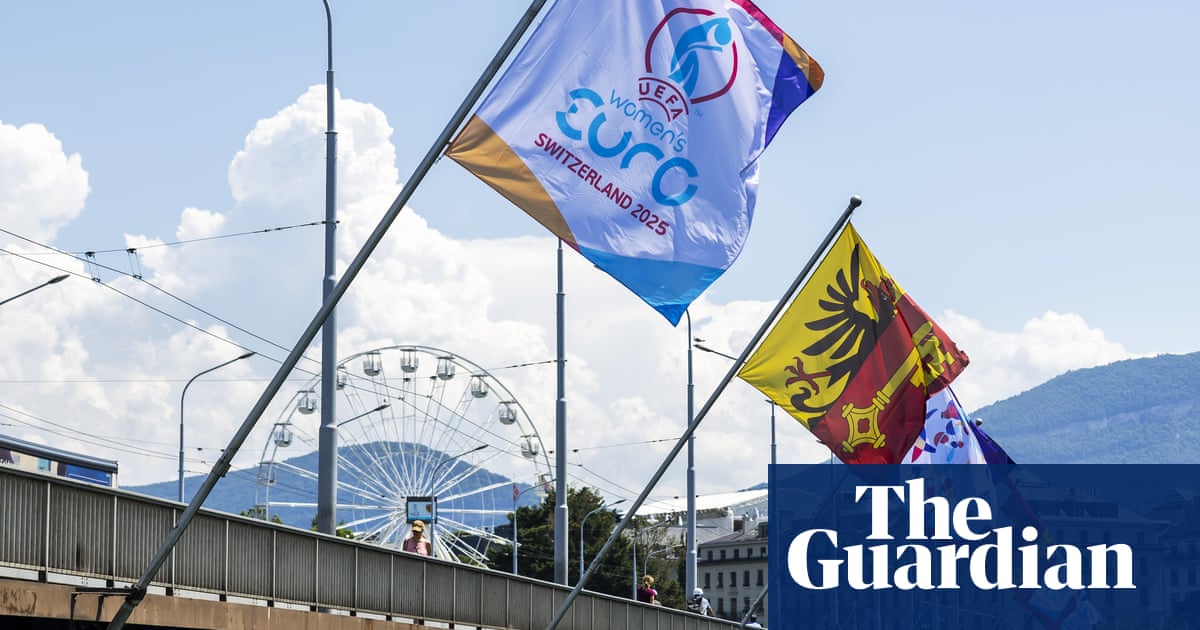In any downtime from ensuring Euro 2025 passes smoothly, Uefa staff can take a short walk to watch Nyon’s summer jazz festival in full flow. Rive Jazzy is in its fourth decade and there should be something for everyone. The Greasers will be on stage to set a tone before England face Wales on 13 July; this Friday anyone with a penchant for swing can turn up at Place du Molard to enjoy harmonies by the Hot Shooters.
The more pressing hope is that there will be plenty of those on Switzerland’s football pitches across the next 25 days. At its elite level, the women’s game has never before been blessed with the depth of quality it can showcase this month. There is justified optimism that no weak link will stick out like a sore thumb among the 16 contenders in this European Championship; at the top end a valid expectation exists that, whileSpainare obvious favourites, at least three or four others are highly equipped to test that status vigorously.
It will play out on a sweltering, but reassuringly stable, stage, whose surface-level figures promise steady evolution from the exuberance of Euro 2022. The fans have bought in: atmospheres will be lively and, crucially, inclusive. Ticket sales have topped 600,000, comfortably a record, and 22 of the 31 games are already sold out. While immersion in adelirious 87,000 Wembleycrowd at the final three years ago sparked some regrets that Switzerland cannot offer a similar theatre, one of the organisers’ priorities was to avoid the oscillations seen back then.
This time there will be no attendance higher than the 35,689 able to fill St Jakob-Park, the Basel venue whose assignments include the final and Switzerland’s opening game against Norway on Wednesday, but nor should there be any analogue of the 3,859 who watched Belgium draw with Iceland at Manchester City’s Academy Stadium. It is unlikely any grounds will be less than one third full, as St Mary’s was when Northern Ireland faced Austria and Norway. The idea goes that this will be an event less given to sweeping statements, instead oozing sustainability and speaking confidently on its own terms of the standards on display.
If there are fewer extremes felt in the stands, those seeking different barometers of progress will expect similar from the matches. Thrashings help nobody. Uefa insiders are particularly keen to see evidence of the tighter competitive balance they believe has been facilitated by increased investment and a successful Nations League, so there is particular interest in how the newcomersWalesandPolandfare among what is otherwise a familiar lineup.
Should they, as a minimum, keep scorelines respectable in fiendish groups, it will be tempting to wonder how those who fell just short might have fared. Can women’s football make a convincing claim to follow the men in expanding to a 24-team tournament? The surfeit of regular qualifiers is a valid criticism but Uefa requires confidence that others are ready to step up. Its “Unstoppable” strategy, which has catalysed investment across the continent, launched last year and now federations must do their bit. As one seasoned figure in the sport puts it: if Portugal can replicate their over-productivity in the men’s game with a competitive women’s programme, then what is stopping Croatia?
These may be macro questions when the action is so close, but the sense of an inflection point is inescapable. Lise Klaveness, the Norwegian football federation’s president, put it well last month when emphasising the need “not to let the head move away from the body”. In other words, a top stratum that now regularly produces scintillating spectacles must not leave everyone else for dead. A €41m (£35.2m) prize pot, far removed from the €16m on offer in 2022, speaks well of the authorities’ intentions and is testament to those voices who have lobbied hard for greater spoils; so does a doubling of the pot available to compensate clubs for releasing their players. The difficulty may lie in ensuring that money does not widen the gap between the haves and have-nots.
It is a valid concern, especially in an era when external parties are happy to test the game’s fabric by ploughing millions into events such as the World Sevens tournament that debuted in May. Euro 2025 is essentially a loss leader for Uefa, which projects a net €20m-25m deficit. That cannot hold for ever and some figures question whether maximum value is being extracted from a sport whose investment potential appears nowhere near exhausted.
Sign up toMoving the Goalposts
No topic is too small or too big for us to cover as we deliver a twice-weekly roundup of the wonderful world of women’s football
after newsletter promotion
The games should, at least, provide their own advertisements. Wednesday’s meeting at St Jakob-Park will be followed in official fan zones across the country; the two in Basel expect half a million visitors to pass through by 27 July and an additional space has been created on Theaterplatz. Norway sounded a warning shot by winning a Nations League game 1-0 in St Gallen a month ago but the hosts, under Pia Sundhage, should reach the quarter-finals. The country’s considered, but palpable, enthusiasm could then boil over.
The wider conversation will outlast the show, but women’s football is perfectly placed to offer a month-long exposition of its burgeoning health. Even if the music beside Lake Geneva retains some allure, the tune being played in those eight venues across Switzerland should prove irresistible.
